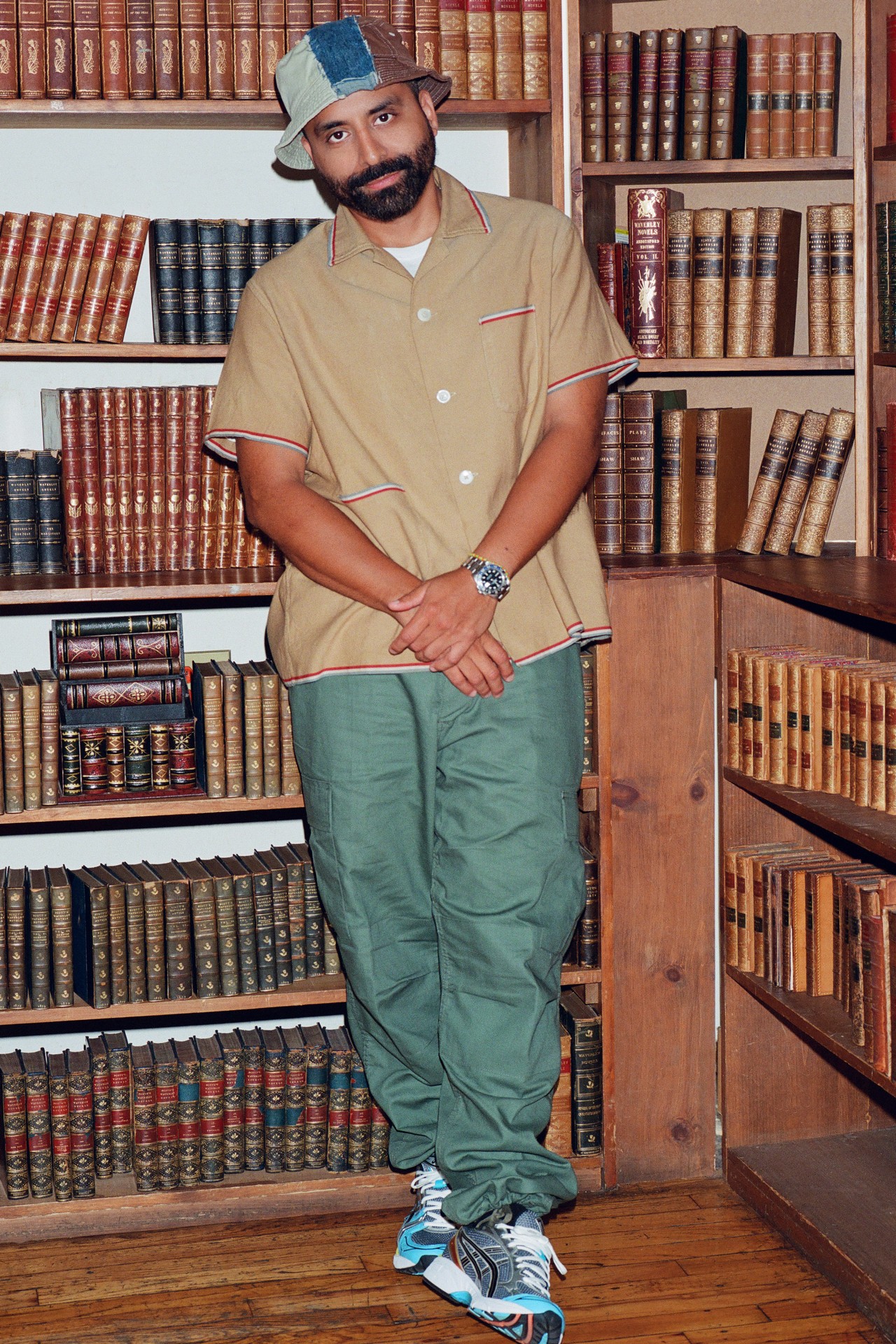Angelo Baque isn’t interested in playing by fashion’s rules. In fact, much of his journey and success has been an unconventional climb outside of the industry’s traditional ladder.
The story begins in his birthplace Richmond Hill on the southside of Queens, New York, where he was raised by a single mother. Life there in the 1980s was all about your crew and where you were from. He was Ecuadorian. Puerto Ricans and Dominicans respectively stuck to their own, and West Indian folk stood by theirs. That small neighborhood was seemingly the end-all-be-all for many people, but Baque “refused to be a statistic” like some of his friends and yearned for more.
His older sister would take him to Broadway in the late ‘80s, where a new universe between Canal Street and 14th Street unfolded for him and presented itself with limitless possibilities. All the sudden, the world wasn’t flat like people in their hometown made it appear. Everyone here could skateboard freely, be into graffiti art, listen to alternative music, wear what they wanted, and be as queer as they were.
At 16 years old, he was invited to the cultural icon Nuyorican Poets Café, a multicultural home and institution for groundbreaking works of poetry, music, theater, and visual arts. Baque was exposed to the best emcees of the city and took to photography, documenting the exciting cultural newness he was absorbing.
He ended up devoting as much time to being in the city as possible, working retail at Canal Jean Company and Stussy, interning at Details Magazine, and studying at the School of Visual Arts until he dropped out due to financial reasons.
In 2003, Baque worked at Nom de Guerre, a concept store on the corner of Bleecker Street and Broadway under the Swatch store in NoHo. It became a “retail bootcamp” for him and the place where he learned how to open a store, build a brand, collection design, merchandising, and customer and buyer behavior. He was also using the space to curate events for his friends in art and photography and brought in his community of friends to be part of the narrative when he could. The boutique grew into a force when their first fall 2005 menswear line was introduced, and fashion publications like Vogue and ELLE started sniffing around. Soon, he was getting invited to the fashion parties and rubbing elbows with the scene.

